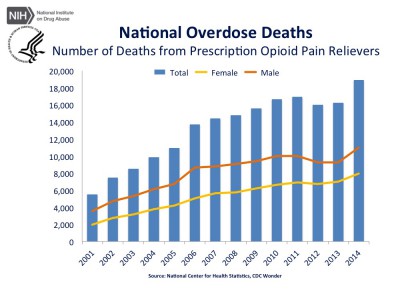Health Officials Demand Black Box Warnings on Opioid Painkillers

Public health directors across the United States are pressuring the Food and Drug Administration (FDA) to put a “black box” warning, the agency’s strongest warning, on prescription painkillers and sedatives. [1]
The demand, which comes in the form of a petition, comes as cities and states grapple with a growing epidemic of painkiller abuse.
The officials write in the petition submitted Monday:
“Only a few labels and medication guides contain specific information on the dangers of concurrent use of these two classes of medications; none contain black box warnings.”
The health directors want the warning to read:
“WARNING: CONCURRENT USE WITH BENZODIAZEPINES [replace with OPIOIDS on benzodiazepine labels] REDUCES THE MARGIN OF SAFETY FOR RESPIRATORY DEPRESSION AND CONTRIBUTES TO THE RISK OF FATAL OVERDOSE, PARTICULARLY IN THE SETTING OF MISUSE.” [2]
The Centers for Disease Control and Prevention (CDC) recently reported that opioid overdose deaths rose to nearly 19,000 in the United States in 2014, the most recent year on record. The prescription painkillers have also played a role in a wave of heroin overdoses in recent years, which is cheaper and easier to access than opioid drugs.

A study published last week in the American Journal of Public Health shows that overdose deaths have been soaring among Americans who use benzodiazepines, or “benzos,” a class of sedatives that includes Valium and Xanax. Researchers found that the death rate from overdoses of the drugs increased more than 4-fold since 1996. Benzo overdoses accounted for nearly 1/3 of the 23,000 deaths attributed to prescription drug overdoses in the U.S. in 2013.
Health officials noted in the petition that benzodiazepine-opioid combinations are especially deadly, and they are frequently prescribed together. For example, it is common for doctors to prescribe an opioid to a patient with acute pain, along with a benzodiazepine to treat muscle spasms. Often, an opioid is prescribed to treat pain alongside a benzodiazepine to treat a patient’s anxiety disorder.
Baltimore City Health Commissioner Lena Wen explained:
“It’s not based on evidence, but it is routine clinical practice. Every doctor who is prescribing these drugs now can and should be aware of the risk of fatal overdose.”
When benzodiazepines and opioids are taken together, they can severely depress the respiratory system enough to stop a patient’s breathing, hence the specific warning on the proposed black box warning. [1]
According to the FDA, a black box warning is appropriate when:
“There is an adverse reaction so serious in proportion to the potential benefit from the drug (e.g., a fatal, life-threatening, or permanently disabling adverse reaction) that it is essential that it be considered in assessing the risks and benefits of using the drug;” OR “There is a serious adverse reaction that can be prevented or reduced in severity by appropriate use of the drug (e.g., patient selection, careful monitoring, avoiding certain concomitant therapy, addition of another drug or managing patients in a specific manner, avoiding use in a specific clinical situation).”
Health officials say the potentially-deadly combination of benzos and opioids certainly qualifies. They state in the petition:
“The science is clear: combining opioids with benzodiazepines is dangerous and is fueling the overdose epidemic. A black box warning will help to educate both patients and clinicians about this potentially lethal drug interaction.” [3]
Sources:
[2] Regulatory Affairs Professionals Society (RAPS)
[3] The Hill
